Visit Reports
Strawberry Hill Visit – Monday 10th October 2011
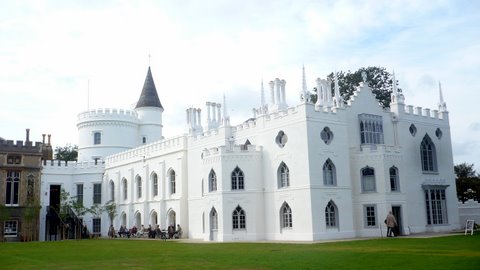
Horace Walpole (1717-1797) son of Robert, Britain’s first Prime Minister, built Strawberry Hill to house his vast collection of
treasures. A coach load of 48 members set off eagerly to visit the magnificent Georgian Gothic Revival mansion at Twickenham, recently
the subject of a £9 million restoration.
We were fortunate to enjoy the parking facilities of the Harpenden Rugby Club for the first time and arrived at our destination in good
time to be welcomed with coffee served in the delightful restaurant with outdoor seating overlooking the grounds.
Divided into three groups, our guides gave us a comprehensive tour of the extraordinary building , which had been rescued after the
creation of the Strawberry Hill Trust. In the Great Sale of 1842, Walpole’s collections were dispersed world-wide, many later bequeathed
by an American collector to the Yale Centre for British Art. The Trust wants to recapture treasures for the house and is restoring the
garden to its eighteenth-century design.
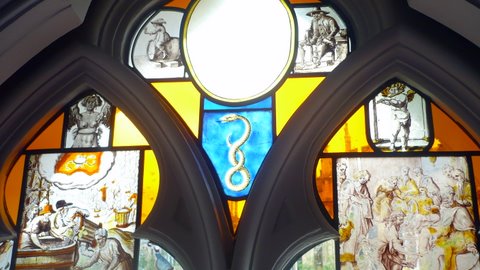
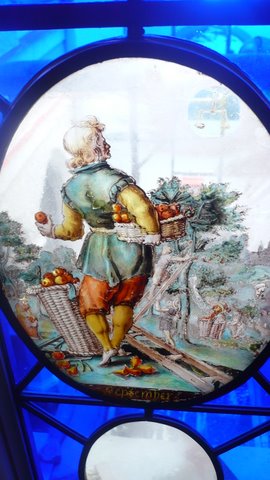
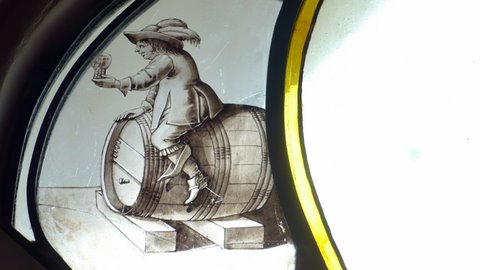
We heard of Walpole’s writings, particularly his famous gothic novel ‘The Castle of Otranto.’ Aristocratic friends from far and wide
came to visit the ‘fairy castle rising by the Thames.’ Following in their footsteps, we marvelled at the early Flemish painted glass
which had been imported by Walpole and arranged in his gothic windows. English armorial glass was introduced later and the light
pouring through the stained glass lit up the rooms with colour. Clear glass in the lower panes allowed us views across the gardens and grounds, although the river was no longer visible in the
distance.
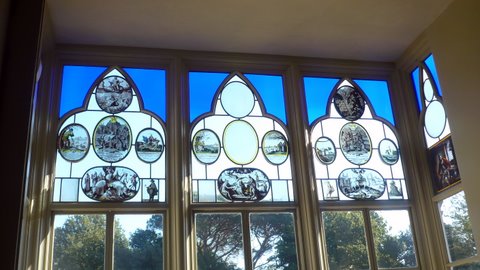
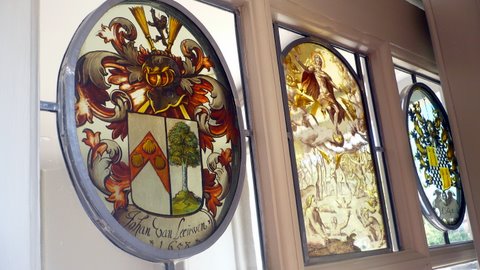
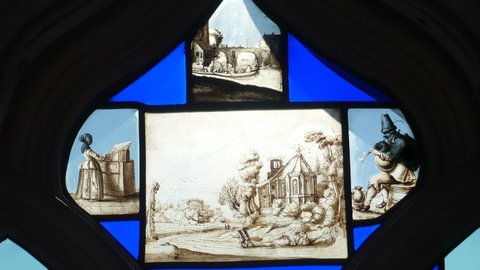
The superb restoration of the entrance hall and elegant staircase was a foretaste of the principal rooms to come. Pierced gothic arches in the library, beautiful screens, exquisite chimney pieces climaxed in the Gallery with its stunning fan-vaulted ceiling. The excellent guides pointed out that, unbelievably, the ceiling based on Henry VII’s Chapel at Westminster Abbey was made of papier mache. The whole effect of gilded fretwork, crimson wall coverings and looking glasses was breathtaking.
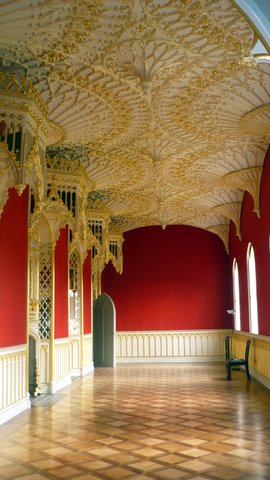
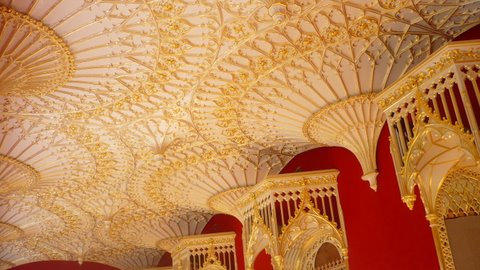
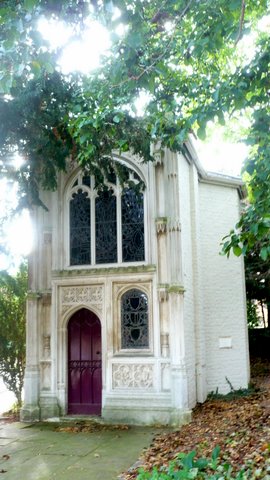
After a delicious lunch in the restaurant, also served outside in the sunshine, members were able to enjoy the grounds. Some sat on the reproduction Shell Seat admiring the architecture of the dazzling-white house, others visited the small chapel, now in the adjacent University car park! The historical exhibition of the fascinating property and its original and subsequent owners was much enjoyed.
We left mid-afternoon feeling very privileged to have enjoyed the visit so soon after the magnificent restoration.
Maureen Welsh October 2011
